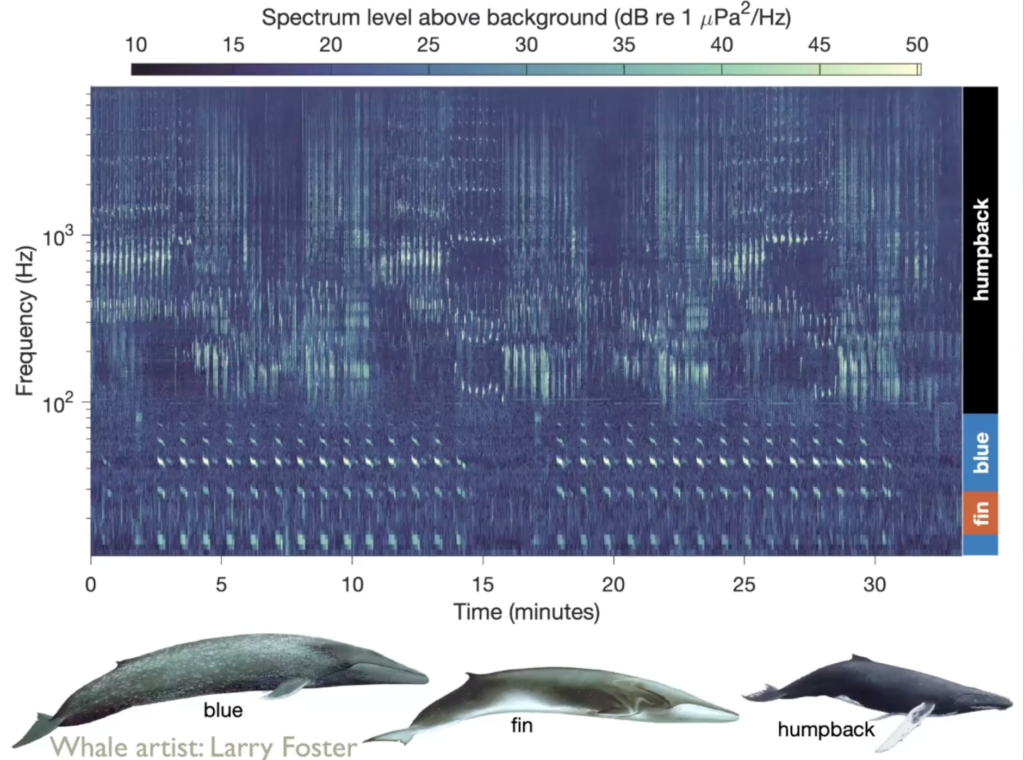
A spectrogram of a full day of the Pacific Ocean measured by Monterey Bay Aquarium in California made on the November 1st 2016.
It describes a frequency content of acoustical signals. The frequency range highlighted with a green colour is approx a range of human hearing (20Hz – 20kHz). The recording was extended to outside the range of human hearing, because some of the species in the ocean produce sounds up to 6 times the upper limit of human hearing. At this same time different geological processes produce sounds below our limit of hearing.
In spectrogram we can see different sound source:
– the species (dolphins and 3 different types of whales)
– anthropogenic noises (such as: boat transits, the earthquakes and wind)
A very bright colour on the spectrogram (higher level of Sound Energy) is referred to as singing, which is structured rhythmic sequences of sounds made by males of three species of baleen whales (blue, fin and humpback whales).

Spectogram shows a simultaneous song during a period of 35 minutes, frequency response from below 10 to 8 kHz. The composition: humpback whales above 100 Hz, blue whales below 100 Hz and fin whales tucked in between 2 harmonics.
Below an example of the sound of baleen whales:
https://www.youtube.com/watch?v=wht0wPM1nF0&ab_channel=NewportWhales
Larry Foster – a whale artist, developed awareness in colour themes and classic composition in a whale history. He played a key role in differentiating whales from whaling, and educated millions of humans over the years to appreciate the incredible and unique sleek, streamlined, beautiful animals that whales are.
Sources:
- Signal Processing 101 & Soundscapes
October 12, 2022 at 12pm EDT
Dr. Kathleen Wage, George Mason University
Dr. John Ryan, Monterey Bay Aquarium Research Institute - https://www.montereybayaquarium.org/animals/animal-stories
- Robert J. Urick – Principles of Underwater Sound